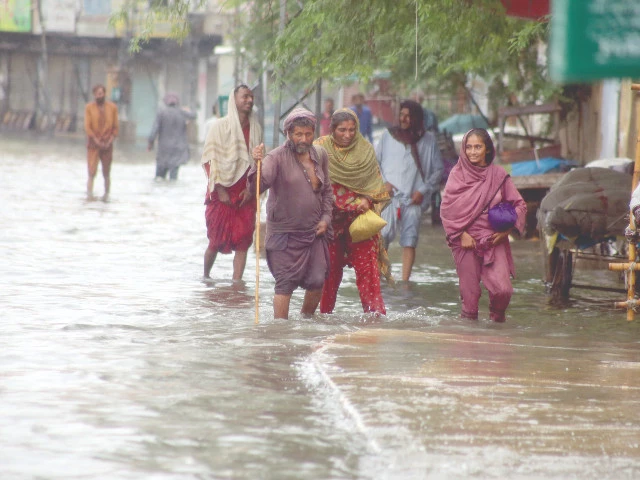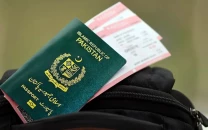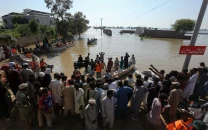Heavy rains trigger urban flooding in Hyd
Conflicting rainfall data from local authorities and PMD raises doubts over accuracy

Torrential monsoon rains lashed Hyderabad and several other districts across Sindh on Monday and Tuesday, bringing life to a standstill in many areas due to urban flooding, prolonged power outages, and damaged infrastructure.
While Hyderabad bore the brunt of the downpour, conflicting rainfall data from local authorities and the Pakistan Meteorological Department (PMD) has raised questions regarding reporting accuracy.
According to figures released by local authorities, Latifabad taluka received a staggering 280mm of rainfall from 8 am Monday to 8 am Tuesday - the highest in the city. Other areas followed closely: City taluka recorded 268 mm, Qasimabad 185 mm, and Hyderabad Rural 158 mm during the same 24-hour period.
However, the PMD reported significantly lower numbers, recording just 85 mm of rainfall in Hyderabad. A PMD official, while speaking to The Express Tribune, expressed confusion over the stark disparity: "I don't understand how there can be such a major discrepancy."
The heavy rains led to partial inundation of major roads, intersections, and low-lying neighbourhoods in Hyderabad. In response, the district administration deployed dozens of diesel-powered dewatering pumps to clear accumulated rainwater, as large sections of the city became waterlogged overnight.
Despite challenges, Mayor Kashif Ali Shoro and Deputy Commissioner Zainul Abedin Memon undertook visits to various pumping stations to oversee the ongoing dewatering operations. Unlike previous years, the administration appeared less reliant on Hyderabad Electric Supply Company (HESCO), opting instead for diesel generators to power essential drainage equipment during outages.
The mayor stated that, despite nightlong torrential rains, most roads in the city were cleared and traffic movement restored by Tuesday morning. He named several localities and thoroughfares that had been de-flooded, and also confirmed the deployment of sanitary workers for drain and nullah cleaning.
Electricity outages compounded the city's woes. Sadiq Kubar, spokesman for HESCO, stated that by 8:45am Tuesday, 99 of the affected 11 KV feeders had been restored, while 55 remained non-functional. He did not provide figures for how many feeders were shut down overnight, during the citywide blackout. By 5:45pm, HESCO claimed to have restored 124 feeders, with 30 still out of service.
As per local authorities, the heaviest three-hour rainfall was recorded in Latifabad, with 72 mm between 2 am and 5 am on Tuesday. City taluka followed with 68 mm during the same period. In Qasimabad and Hyderabad Rural, the peak 3-hour rainfall was recorded from 11pm Monday to 2am Tuesday, at 45mm and 40 mm, respectively.
Due to the severe weather conditions and flooding, Deputy Commissioner Zainul Abedin Memon ordered the closure of all educational institutions in Hyderabad on Tuesday. Universities, including Sindh University in Jamshoro, also suspended academic activities for September 10.
Beyond Hyderabad, heavy rainfall was also reported in other parts of Sindh: Khairpur, 81 mm; Tharparkar, 69 mm; Naushehro Feroze, 59 mm; Dadu, 46 mm; Thatta, 38 mm; Various areas of Tharparkar, 33 mm.
























COMMENTS
Comments are moderated and generally will be posted if they are on-topic and not abusive.
For more information, please see our Comments FAQ